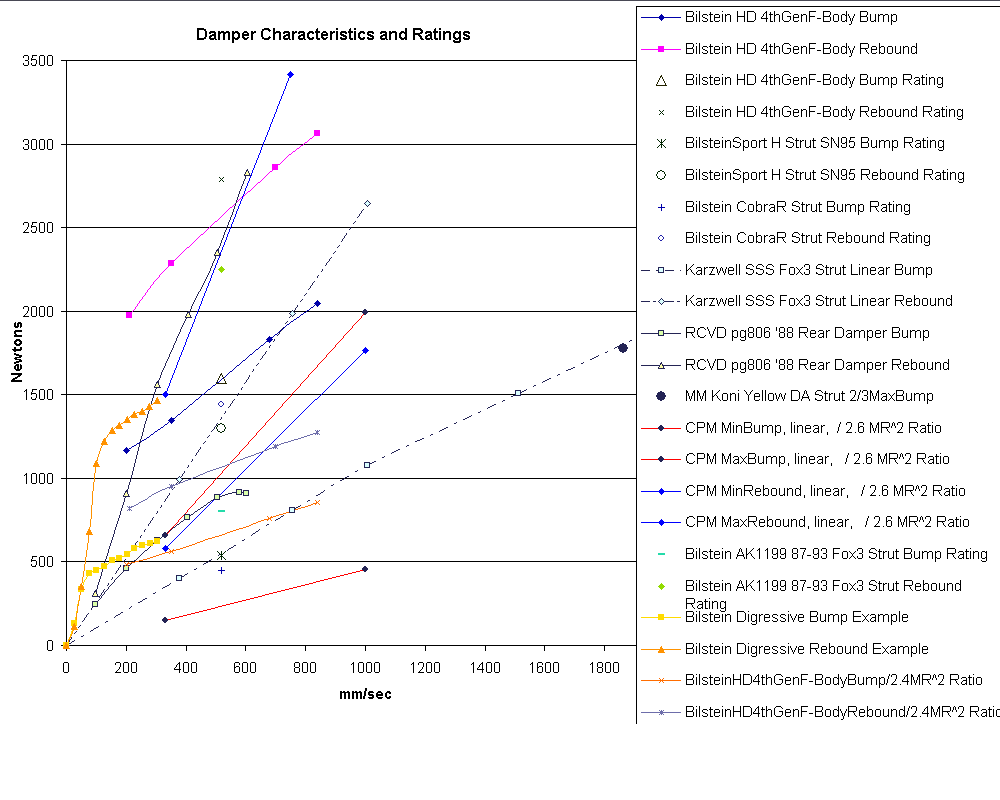Torque = Force * radial_distance Force = spring_constant * compression Compression also depends on radial_distance (just as circumference = 2pi * R) So you've got torque = K*R*R = k*R^2, where k is just a constant (spring constant*2pi). So the torque on the arm is dependent on the radius squared. To determine the wheel rate, you need to look at the square of the motion ratio. The rear lower control arm has the spring located around 70% of it's length. So the wheel rate is only actually 0.7^2 ~ 0.5 (ie half the spring rate). The stock springs are about 200#, so the wheel rate is 100#. Up front, the wheel rate is about 1/4 for a spring in the stock location (it's about 9/10 for a coil-over). The stock springs are about 425#, and the wheel rate is around 100#. The added advantage of the coil-over is that it decreases the load on the control arm bushings, so they articulate freely, providing a smooth ride. Pitching (for/aft sea-sickness) occurs when the front:back weight to wheel rate isn't balanced. If your shocks/struts are overdamped, this may not be an issue. The stock mustang has a weight distribution of about 60:40, so if you're running a rear rate of 100#, you should really run 150# up front. This corresponds to around 600# in the stock location.

Back to: HOME